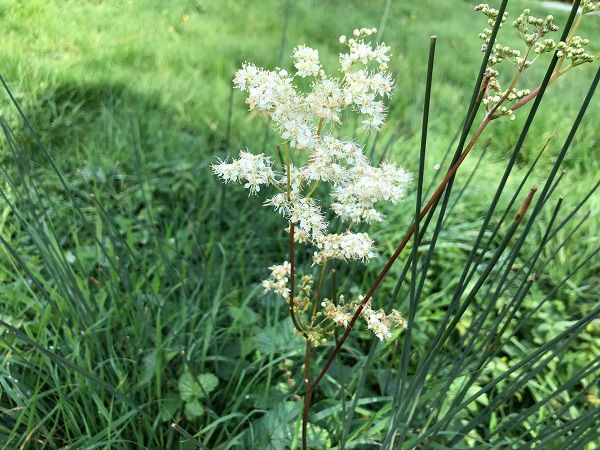Meadowsweet - Filipendula ulmaria
- The Foraging Course Company
- Feb 6
- 3 min read

Edible plant - novice Season - leaves; spring to summer, flowers: summer, seeds: late summer Common names Meadowsweet, mead wort, queen of the meadow, pride of the meadow, meadow wort, bridewort, dollof, meadsweet, meadow queen, lady of the meadow
Scientific name meaning: Filipendula has its origins in the Latin Filum, meaning thread, and Pendulus meaning to hang down. This is a reference to the way the tubers of the plant hang on thread-like roots. Ulmaria comes from New Latin and is the mediaeval name for goat's beard - a plant with elm-like leaves, which meadowsweet's leaves resemble
Habitat  A native of Britain and Europe, Meadowsweet likes wet habitats. It is often found near water and in damp meadows. However, it does not grow on acidic peat. |
Overall structure  The long compound leaves of meadowsweet grow from a basal rosette. In summer, flower stalks that can reach up to 2m emerge. These are topped with an inflorescence of frothy white flowers. |
Leaves  The leaves are pinnately compound with pairs of deeply-veined, serrated leaflets. The leaflets are roughly oval shaped but the terminal leaflet is palmately lobed. The leaf stem is tinted red, sometimes strongly, and has intercalary (small intermediate) leaflets. When crushed, the leaf has a strong medicinal to cucumber-like smell. |
Stem  The flower stems robust, cylindrical and hairless. The can reach 2m tall. |
Flowers  The creamy-white flowers appear in summer in dense clusters on a panicle inflorescence. The reproductive parts are long and protrude from the flowers giving them a feathery/frothy appearance. The flowers open from the bottom of the inflorescence upwards and have a medicinal x honey aroma. |
Seeds  The seeds appear from late summer and are roughly spherical and deeply grooved giving them a spiral-like appearance. |
Possible lookalikes  Dropwort (Filipendula vulgaris), pictured, - not to be confused with the Apiaceae dropworts - could be confused with meadowsweet, but its leaves are much more fern-like in appearance.
|
Use as a food The flowers can be used to make cordial, syrup, jelly and tea infusions. They have been historically used to flavoured mead and beer, but can be used to make a liquour.
The young leaves can be cooked and eaten, but the flavour is not great! Use in herbal medicine and medicine Due to its high concentration of salicylic acid, meadowsweet was used in the past to make the painkiller Aspirin. However, it is now lab synthesised. The name is actually derived from the former genus name of meadowsweet: Spiraea.
Additionally, it has been used to treat diarrhoea, gastric problems, sores, ulcers, respiratory disorders, fevers, and colds, and as a diuretic, astringent and antiseptic
If you are suffering from any ailment or need medical advice, please see your General Practitioner.
Hazards Those under the age of 12, or who have an Aspirin sensitivity, or suffer from a blood thinning disorder or asthma, or those on blood thinning tablets should avoid meadowsweet in large quantities. It should also be avoided during all stages of pregnancy and nursing
Other uses None known Importance to other species The flowers provide a source of nectar for many pollinators and a food source for various beetles
Always stay safe when foraging. You need to be 100% sure of your identification, 100% sure that your foraged item is edible, and 100% sure that you are not allergic to it (it is good practice to always try a small amount of any new food you are consuming). If in doubt, leave it out!









Comments